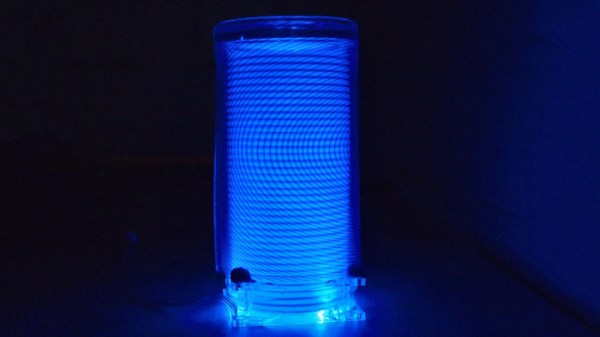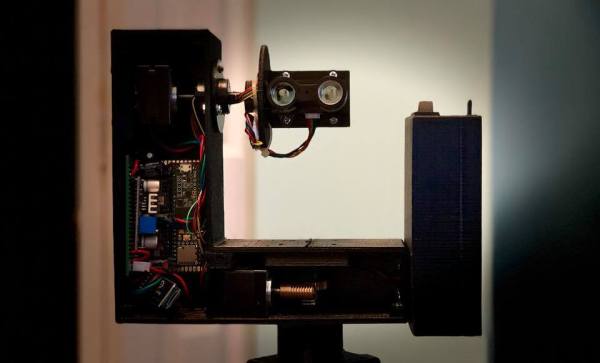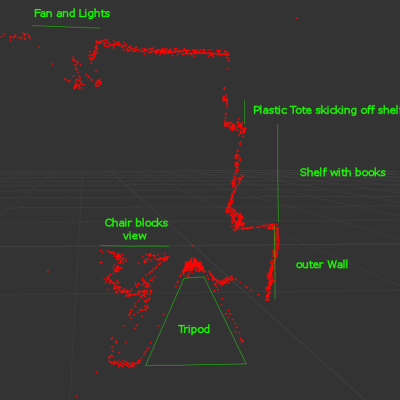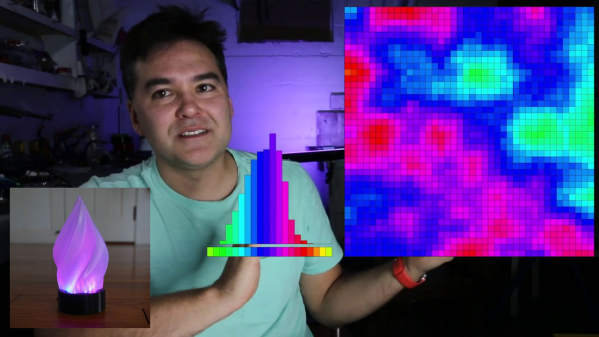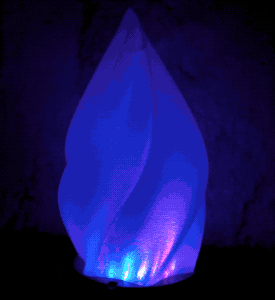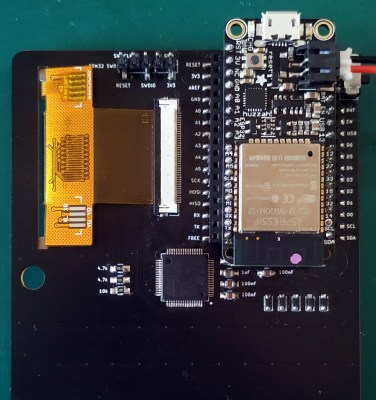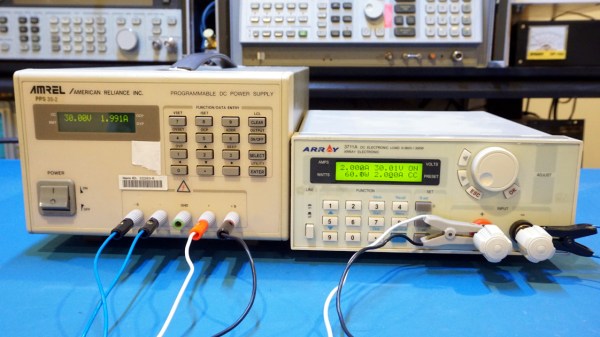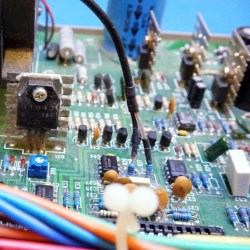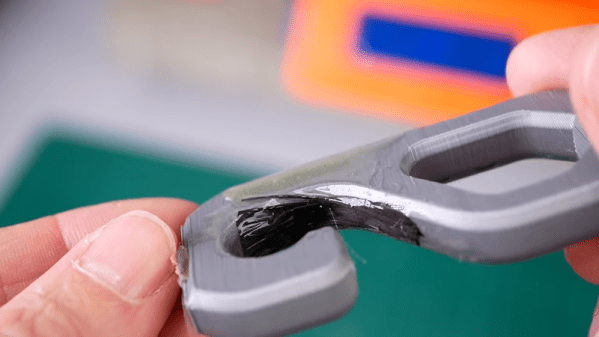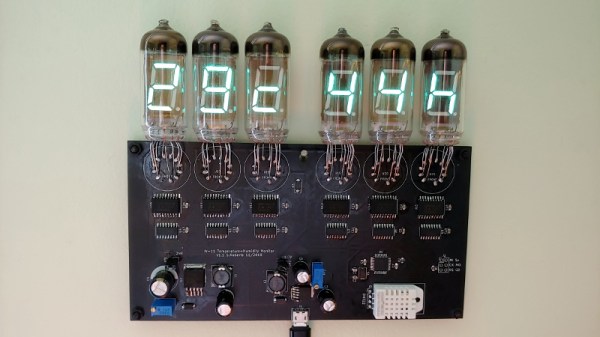
Moiré patterns are interference patterns created when grids of different size or alignment are placed over each other. You’ve probably seen these when photographing a TV screen or looking through a pair of windows screens at the same time. [ChrysN] put the effect to work with this spinning Moiré lamp build.
It’s a build that can be achieved with scrap-bin components. An LED-encrusted PC cooling fan is used as the base of the lamp, fitted with Sugru bumpers to hold a cheap glass vase. A line pattern is then printed on to paper, rolled into a cylinder, and slid on to the fan to spin with the blades, inside the vase. Another line pattern is then printed on to a transparency (a printable transparent sheet for those who don’t remember overhead projectors) and slid around the outside of the vase. When powered up, the LEDs glow, and the fan spins, creating a hypnotizing moving moiré pattern.
It’s a simple but visually captivating build, and one that should keep you up at night thanks to the blue LEDs. Moiré patterns can do so much more though – they’re even put to work guiding ships. Video after the break.

